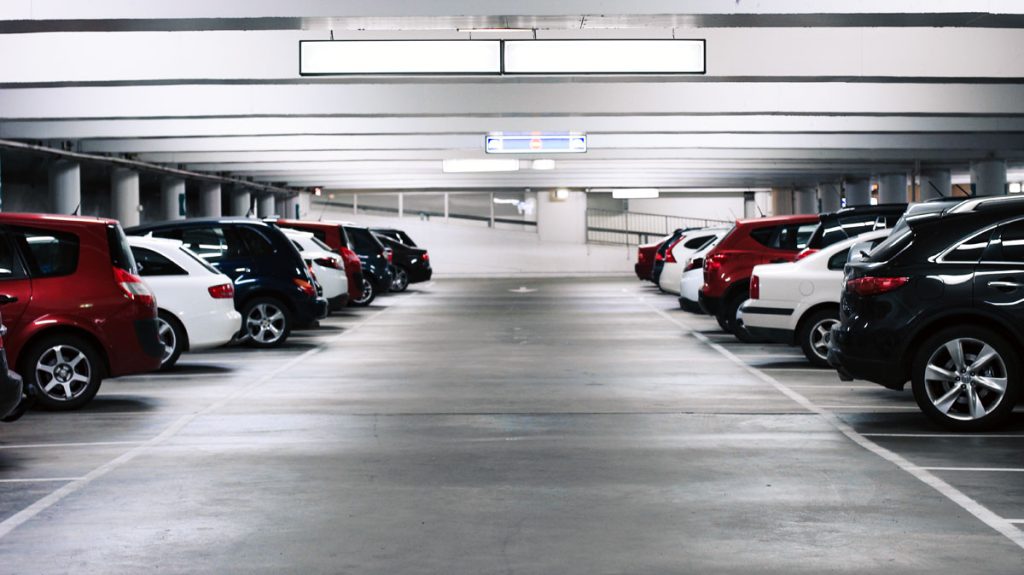Navigating the bustling streets of a big city as a tourist presents a unique set of challenges and opportunities, from understanding local traffic laws to dealing with dense traffic and finding parking. Driving in unfamiliar territories requires a good sense of direction and an awareness of the specific regulations and cultural nuances of urban driving. Otherwise, you may be involved in an accident — something that is unfortunately all too common among tourists. According to a 2022 study, tourists were more likely to have higher rates of injury than local populations and higher mortality rates.
Learn the necessary knowledge as a tourist to explore big cities safely so they can worry less about their well-being and focus on making memories. From securing the right insurance to knowing your legal rights in the event of an accident, we’ll cover essential aspects to protect and enhance your journey as a tourist driver.
Challenges of Driving in a Big City
A big city indeed has its charms. But for any tourist, it can be extremely daunting. Some have tight-knit, one-way streets. Others have vast interstate highways that interweave with one another. And some have hundreds of pedestrians that weave in and out of standstill traffic. No matter where you go, you must first research the challenges you may face and how to address them, such as:
Navigating Through Heavy Traffic
Most cities in the U.S. have ebbs and flows of traffic. Traffic typically peaks in the morning and evening when people commute to and from work — around 8 a.m. and 5 p.m. However, you might see more people out on the road around noon as people search for lunch options around town. If you’re visiting an area, it’s best to plan your travel time around these times to avoid the potential for traffic and subsequent accidents. The more people there are on the road, the more likely you will encounter an accident.
However, accidents and the traffic jams that follow can happen at any time. In these circumstances, stay patient. Even if you have a tight schedule for your visit, getting antsy and making risky decisions may worsen the situation. You may encounter aggressive or reckless drivers who aren’t paying attention. It’s best to use defensive driving at all times, but it is especially pertinent in big cities, as you’re more likely to encounter them in population-dense areas. Follow these defensive driving tips:
- Stay out of other drivers’ blind spots.
- Keep an eye on surroundings near and far ahead of you.
- Don’t expect the drivers around you to make the right decision.
- Give space to the drivers around you, especially those who may seem impaired.
Most importantly, pay attention. As long as you do, you’ll anticipate an accident before it occurs.
Understanding Local Traffic Laws
In the U.S., traffic laws may vary from state to state, just as they may vary from country to country. For example, some countries, such as Australia and the U.K., use the left side of the road, while most other countries use the right. If you’re planning on traveling outside of your home country, it’s essential to research these roadway differences beforehand. Most countries’ embassy websites typically list traffic laws for you to study.
It’s also essential to give equal consideration to visiting differing states within the U.S. Many cities may use four-stop intersections, while others may use roundabouts.
Some cities will also have differing laws regarding cell phone use, seat belts, and other driving behaviors. For example, lane-splitting is allowed in California, while other states have stricter stances. You can check the local Department of Motor Vehicle Services and study their updated laws to find out the differences between the states.
Adhering to Local Driving Customs
In addition to local laws, you must familiarize yourself with local customs that drivers follow. This can include everything from honking to using your headlights to signal to other drivers. It may be challenging to anticipate fully, so paying attention while driving and staying respectful of others is important. If you encounter someone experiencing road rage — even if you didn’t make a mistake — don’t engage. If you do anything, see if there’s a way to give space to the other driver.
No matter where you go, give pedestrians the right of way. Drivers will typically pay for damages unless the accident occurs in a state with differing laws regarding pedestrians who are at fault.
Finding Parking
Even once you get past the traffic and the laws of the road, you have to find a place to store your car while seeing the sights of a city. Since cities are so populated, many provide parking garages. However, these garages often come with costly fees — like most parking meters on city streets.
These parking meters often have a time limit. You could receive a ticket if you don’t get to your vehicle fast enough. You may also receive a ticket if you park in an unpermitted area. The city reserves these areas for emergency vehicles, employees, residents, public transportation, and construction service vehicles. Without a permit, the city could also tow your vehicle.
You may have to search around for a while to find cheap parking that doesn’t require a permit. Luckily, some apps will help you find parking spots and let you know how your vehicle fits, a common pain point among free parking spaces in big cities.

How to Drive Safely in a Big City as a Tourist
Even if you anticipate all of the challenges of driving in a big city, you must keep your safety as a top priority. You are particularly vulnerable as a tourist, as you may be less comfortable with the area around you, which can be easily overwhelming. Even worse, others may know and try to take advantage of that. However, you can easily navigate the roads by keeping the following considerations in mind.
Renting a Car
Often, when traveling, you’ll need to rent a car. When renting a car, you’ll receive an agreement. In this agreement, the renter will agree upon the following conditions:
- Return the vehicle at a pre-determined time and date.
- Follow all local roadside laws.
- Do not exceed beyond a specific mileage.
- Pay fees associated with the base daily rate, security deposit, fuel, and exceeding mileage agreement.
- Do not hold the owner liable for any damages or losses during the rental period.
This agreement will also include an agreement to pay for damages with or without the help of insurance. If you’re concerned, consider the following rental insurance options:
- Collision damage waiver (CDW): This policy prevents you from having to pay for any damage to the car that occurs while you rent it or if it’s stolen.
- Supplemental liability insurance (SLI): Under this policy, you don’t have to pay for other drivers’ claims of damages or injuries caused by an accident.
- Personal accident insurance (PAI): This policy compensates for any medical expenses you may have in an accident.
- Personal effects coverage (PEI): Under this policy, the company will pay for any items lost during the rental period.
If you already have car insurance, research your coverage before declining the abovementioned insurance options. Most insurance companies don’t cover accidents when you’re abroad, except in Canada or Mexico, so they may recommend looking elsewhere for travel insurance, opting for the insurance provided by the car rental company, or investing in a credit card that provides travel insurance. No matter the case, search for these insurance options at least a month in advance to ensure everything is processed beforehand.
Preparing for the Drive
Before you get in your vehicle, you must be familiar with it. This is especially important if you’re renting it. Otherwise, you may get distracted while driving, trying to figure out how to turn on the A/C or the windshield wipers instead of focusing on the road.
Wherever you plan to visit, plan your route. Although Google and Apple maps may be advantageous by providing roadside instructions, it’s still essential to look at these directions beforehand or use a map to understand where you’re going. By doing so, you’re less likely to be stressed during the drive. You should also consider apps that still provide instructions even when experiencing connectivity issues. If you’re worried about getting lost, you can always record the instructions beforehand to avoid getting lost.
You should also check traffic reports beforehand. Many news organizations will report any accidents that may be causing traffic jams, and most route-planning apps will report any road conditions for you to know of. You should also check the weather forecast beforehand. If it’s snowing or raining, it may cause hazardous conditions, which requires more cautious driving to avoid accidents.
Staying Calm and Focused
Despite the stressors you may encounter, stay calm. Driving while emotionally distraught will only worsen your driving, making you even more stressed. To stay calm, take deep breaths. Pull off the side of the road until you’re in control of your emotions. Taking breaks is essential for mental well-being, and you’re less likely to fall asleep behind the wheel. If you’re taking a longer drive, be sure to pull off the side of the road or visit a rest stop now and then to stay alert.
Avoiding distractions can also help you stay calm. You’ll be more likely to stay focused and anticipate accidents before they happen.
Do You Need a U.S. Driver’s License to Drive as a Tourist?
The short answer is no, you don’t need a U.S. driver’s license to drive in the U.S. — that is, as long as you have an English-written license or an International Driver’s Permit (IDP) with you, you don’t. Of course, you’ll need to consider some factors before driving across the U.S. for months.
International Driving Permits
An IDP is a temporary license some states — such as Idaho, Washington, Montana, Arkansas, Mississippi, Alabama, Georgia, Virginia, Vermont, or Connecticut — require. As a U.S. citizen, you’ll also need an IDP to visit countries other than Canada or Mexico, as most countries don’t recognize U.S. licenses. Even if some countries do recognize your license, you may be unable to rent a car.
To obtain an IDP, either as an international tourist visiting the U.S. or a U.S. citizen traveling outside the country, you must apply to the motor vehicle department of your home country. You must be at least 18 years old; however, most car rental companies won’t allow you to rent until you are at least 21 years old. You must also bring your passport and ID when applying and traveling elsewhere. You’ll need both when renting a car, boarding a flight, or contacting international government officials and agencies.
An IDP is valid for up to one year after you apply for it. If you plan to stay longer, you must renew every year.
Alternatives to Driving in Big Cities
Since renting a car, obtaining an international license, and following local travel laws involve risks many tourists aren’t willing to undertake, they may turn to other options. Let’s take a look at a few.
Public Transportation Options
Big cities, unlike smaller ones, are more likely to provide more public transportation due to the significant funding the populace provides. You can find buses, subways, metros, and trams in these areas. These options are often convenient and centrally located in the city. However, most require a small fee, although some cities simply ask for a considerate donation to continue operating.
If you’ve never accessed these options before, it can get confusing. Luckily, these transportation services will provide a map to help users understand the different stops and destinations. In addition, these systems will announce different arrival times regularly so passengers understand where they are. No matter what public transportation you use, research the route beforehand to know you’re going in the right direction. Also, pay attention. You don’t want to miss your stop because you were distracted.
Walking and Cycling
If you’re planning on a centrally located area, you may not even need to consider using public transportation, hiring a taxi, or renting a car. You can simply walk or bike. Some cities even provide bike or scooter-sharing programs that cost a small fee. Often, the program will scatter these bikes or scooters around the city, but you may be able to locate them using the local bike-sharing app or website.
Whether you’re biking or walking, you’re still at risk of an accident. In big cities, pedestrians must be aware of their rights, local laws about right-of-way in intersections and roundabouts, and the drivers around them.
Ride-Sharing and Taxis
Depending on your location, you’ll have access to both taxis and ride-sharing services like Uber and Lyft when you travel. While ride-sharing services are convenient, they can get more expensive when you factor in surge pricing in congested areas. On the other hand, taxis have a fixed price — they cost the same no matter how busy it is.
When using either service, stay vigilant. Some ride-sharing programs have differing requirements to provide safety for users, and you never know the person fully behind the wheel or their driving experience. On the other hand, government agencies often regulate taxi drivers with stricter policies. If you are involved in an accident, the insurance ride-sharing programs provide for their drivers, and the driver’s personal car insurance will cover any medical expenses caused by the accident. Regardless, contacting a personal injury lawyer can help you understand your rights.
Taxis and ride-sharing apps also have a history of scamming users. Some drivers may even scam you by asking for your credit card and personal information and using it long after dropping you off. In these scenarios, don’t provide more money than is required, other than a tip, and avoid giving personal information.

Legal Recourse If You Are in an Accident as a Tourist
Even if you do everything possible to prevent one, an accident can still happen. If you’re renting a car, you could end up in a car accident. Even if you try to prevent one by walking around as a pedestrian or using a ride-sharing app, another driver could injure you. In either case, stay prepared for any outcome.
Immediate Steps Following an Accident
The first thing you should do in any accident is to check the welfare of everyone involved, including passengers in your vehicle and those in surrounding vehicles. Next, you need to call emergency services or instruct someone else to do so. When instructing, delegate the task to a specific person. Otherwise, people will assume someone else is calling when, in actuality, no one has called. Soon after calling, police officers, the fire department, or an ambulance will arrive on the scene.
In the meantime, document the scene. Take pictures of the vehicle and any injuries you may have. You should also exchange contact and insurance information with the parties involved. If you’re renting a car, call the car rental company, and they will fill out an incident report with the documentation you’ve provided.
Understanding Your Insurance Coverage
Once all is settled, contact your insurance company, even if you are not at fault. They will let you know how to proceed based on your documentation, police reports, and local laws. When talking to your provider, ask if you need to obtain the accident report from local authorities or if they will do so.
If you don’t have insurance, you will have to pay for any damages that occurred in the accident if you are at fault. If you are not at fault, you may still not receive as much compensation from the other driver’s insurance company.
Seeking Legal Assistance
Regardless of the outcome of the accident, you can always contact a car accident legal team to advocate for rights in opposition to the parties involved, including your insurance company. Even if they aren’t practicing in the area you’re visiting, they can educate you on your rights as a tourist, which may vary depending on your location. They can also consult legal teams in the area you’re visiting.
If you were injured in an accident, a personal injury lawyer can represent you in the claim, regardless of who is at fault. They may also know of differing laws in the country that help you with compensation.
No one wants to be involved in an accident, but they still happen — particularly when traveling in a big city. Although being involved in an accident may be daunting as a tourist, Heidari Law Group can help. You deserve compensation for any harm you receive while traveling, no matter where you are.
FAQs About Driving as a Tourist in Big Cities
Can I Drive in the U.S. with My Home Country’s Driver’s License?
No, unless you use it to obtain an international driving permit (IDP) before traveling.
What Should I Do If I Get Into a Traffic Accident as a Tourist?
Make sure everyone involved in the incident is okay. Call emergency services immediately. Then, document the incident by taking photos. Also, exchange contact and insurance information with your car and travel insurance provider as soon as possible.
How Can I Avoid Common Scams Aimed at Tourist Drivers?
Scammers may send you links to fake websites to sell fake IDPs. If it isn’t the U.S. Department of State, the American Automobile Association, or the American Automobile Touring Alliance, it’s not a true IDP. Taxi and ride-sharing drivers may also scam you by asking for personal and financial information to steal after you leave the vehicle. Avoid giving personal information away, and only provide the expenses necessary for a ride. Fake police officers may pull over tourists and ask for their wallet or ID. Whether it’s a real or a fake police officer, always ask for their credentials before proceeding.
Are There Any Specific Tips for Driving in a City I’m Unfamiliar With?
Always research your destination beforehand. Remember any traffic laws that may differ in the area, and plan out so you don’t interfere with traffic flow.
What Are the Best Ways to Learn Local Traffic Laws Before I Visit?
Always rely on official government sources first. Most states’ Department of Motor Vehicles will publish local traffic laws unique to their area and the traffic signs you need to know. You can also seek out travel guides that may provide helpful advice.
How Do I Choose the Right Insurance Coverage When Renting a Car as a Tourist?
Various types of car insurance offer differing coverage levels. A collision damage waiver absolves you from having to pay for any damage that occurs to the car while you rent it or if it’s stolen. Supplemental liability insurance covers you from other drivers’ claims of damages or injuries caused by an accident. Personal accident insurance and personal effects coverage will pay for any lost items or medical expenses you have in an accident. You may not need to invest if your travel insurance is extensive.
Is It Better to Use Public Transportation or Rent a Car in Big Cities?
Your choice will ultimately depend on what you plan on doing or where you plan on visiting. If you plan on staying within a large city that offers public transportation, you will likely be fine without renting a car. However, if you plan on exploring areas outside of the city or if the city doesn’t offer that much public transportation, it would be best to rent a car.
What Alternatives Are Available Besides Driving Myself in Big Cities?
Plenty of options are available if you don’t want to drive, including public transportation modes like trains, buses, and metros. However, not all cities offer public transportation options like this. You can also utilize bike-sharing programs, ride-sharing apps like Uber and Lyft, or taxis. When in doubt, walking can be great in big cities that are centrally located.



